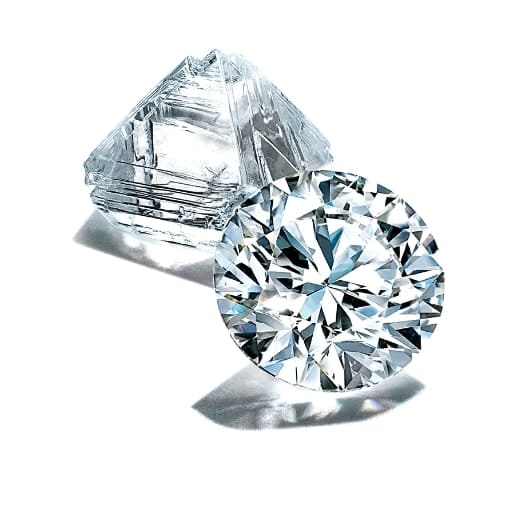Diamonds have captivated humanity for centuries because of their unparalleled brilliance and enduring appeal. These precious gemstones, which were formed deep within the Earth’s mantle under intense heat and pressure, have traditionally been symbolic of love, commitment, and status. Nevertheless, recent technological advancements have introduced a new concept that challenges the very essence of diamonds – memorial diamonds. Lab-grown gems are synthesized by using carbon extracted from human or animal remains, making them an alternative to natural diamonds that is both unique and emotionally charged. This article examines the differences between memorial diamonds and natural diamonds, examining their origins, environmental impact, emotional significance, and market implications.
- Origin and Formation:
Diamonds are formed naturally deep within the Earth’s mantle through a complex geological process over millions of years. When carbon atoms are exposed to extreme temperatures and pressure, they crystallize into the iconic diamond shape. After being brought to the surface by volcanic eruptions, these diamonds are mined from kimberlite pipes or alluvial deposits.
Memorial diamonds, on the other hand, are grown in a laboratory using advanced technology that replicates the formation of natural diamonds. A small amount of carbon is extracted from the cremated remains or hair of a loved one, which serves as a foundation for the growing diamond. A controlled environment of high pressure and high temperature is used to expose the carbon to high pressure and high temperature, which, over a period of several weeks to months, allows it to crystallize into a diamond.
- Environmental Impact:
It has been well-documented that diamond mining has had a negative effect on the environment for decades. It has been suggested that the extraction of natural diamonds can result in habitat destruction, soil erosion, water pollution, and displacement of populations. As well as contributing to the emission of carbon dioxide, the process of mining, cutting, and transporting natural diamonds is energy-intensive.
Comparatively, memorial diamonds have a much smaller environmental impact. When compared to traditional mining processes, laboratory-grown diamonds, including memorial diamonds, require a lesser amount of energy and water. Due to the controlled conditions of the diamond synthesis process, the negative ecological consequences of diamond mining are reduced, making the synthesis of diamonds more environmentally friendly.

- Emotional Significance:
There is a profound emotional significance to memorial diamonds, which differentiates them from natural diamonds. Carbon ashes can be created from the remains of a loved one, providing a tangible and lasting memento that will remain as a memorial posthumously, preserving a link with the deceased. It is believed that these gems serve as a way to maintain the memory of a deceased loved one, thus providing a means for healing and remembrance.
While natural diamonds often symbolize love and commitment, memorial diamonds offer a more personalized and emotionally powerful connection. For grieving individuals, creating a memorial diamond can serve as a form of healing, as it involves actively participating in the transformation of their grief into something beautiful and meaningful.
- Market Implications:
Diamonds have historically been dominated by natural diamonds, controlled by a limited number of major players. However, the advent of lab-grown diamonds, including memorial diamonds, has caused this landscape to change. Diamonds grown in labs have gained popularity as a result of their ethical and sustainable characteristics. Specifically, memorial diamonds are appealing to a niche segment of the population seeking a more meaningful and personal alternative to traditional jewels.
Diamond companies that produce natural diamonds have recognized the growing popularity of lab-grown diamonds and have started investing in the production of synthetic diamonds. A shift such as this can be attributed to the industry’s acceptance of changing consumer preferences as well as the need to adapt to a more environmentally conscious market.
- Ethical Considerations:
Ethics plays a significant role in the comparison of memorial diamonds and natural diamonds. Human rights violations, child labor, and conflict financing have been associated with the mining of natural diamonds in some regions. Kimberly Process Certification Schemes were established to prevent the trade of “blood diamonds,” but critics maintain that the scheme does not effectively curb unethical practices.
Memorial diamonds, which are a result of lab-grown technology, overcome many of these ethical concerns. You are able to ensure that the source of carbon is ethical and that the final product is free of any negative consequences by virtue of the transparent and controlled nature of the process.
Conclusion
Embedding our dearly departed into a jewel that symbolizes eternal love is a profound and eternal tribute to our dearly departed. As a symbol forged from ashes or hair, it symbolizes the bond shared between the living and the dead. Saint Diamonds redefines how to memorialize loved ones by transforming ashes into diamonds. Natural diamonds and memorial diamonds exhibit striking differences in their origins, ecological footprint, emotional resonance, market dynamics, and ethical implications. A diamond’s historical significance and broader symbolism are the hallmarks of natural diamonds, while a memorial diamond offers an intimate and personalized connection to the deceased. As a consequence of the quest for ethical and sustainable diamonds, lab-grown diamonds have revolutionized the diamond industry. It is important to keep in mind that whether the choice is to purchase a memorial diamond or a natural counterpart, your personal values, beliefs, and the desire to form a lasting and meaningful connection will guide the choice.
Read More
What is cheaper? Funeral or Memorial Diamond?
How Much Does it Cost to Create Memorial Diamonds from Ashes?

